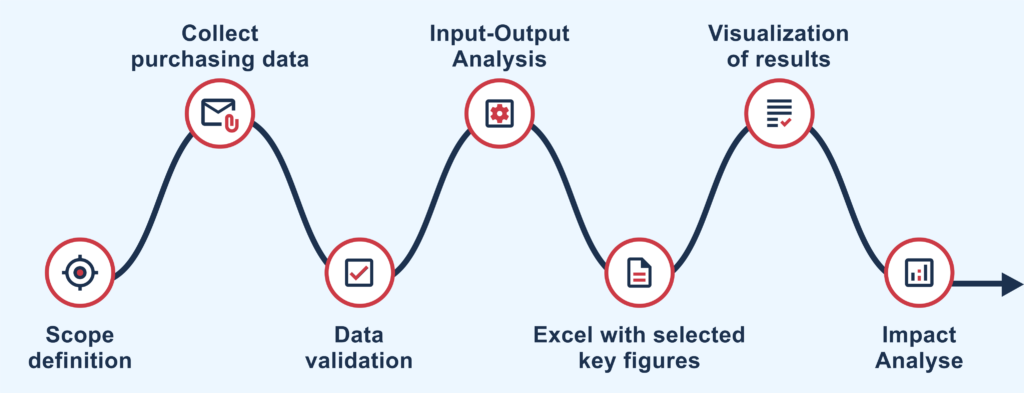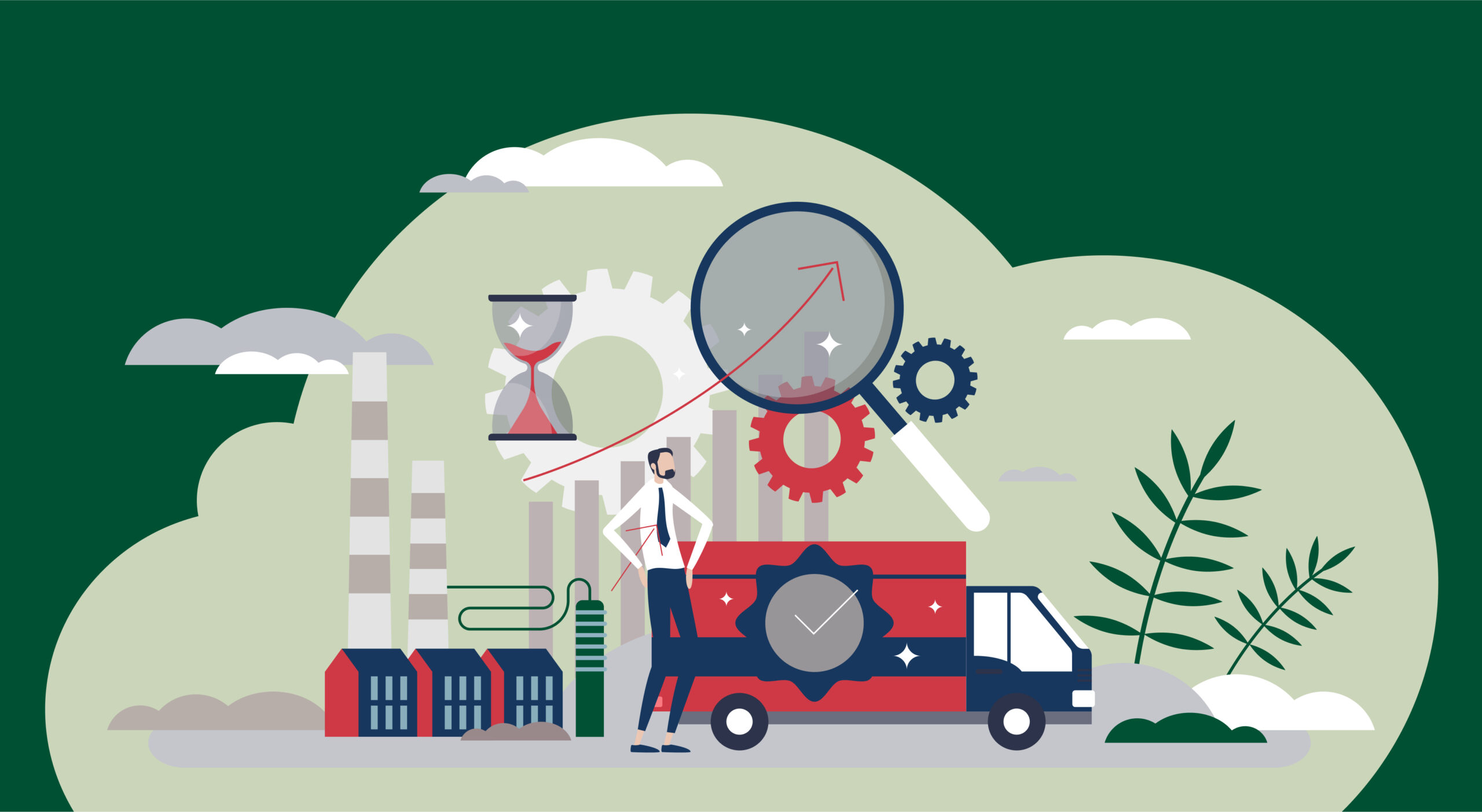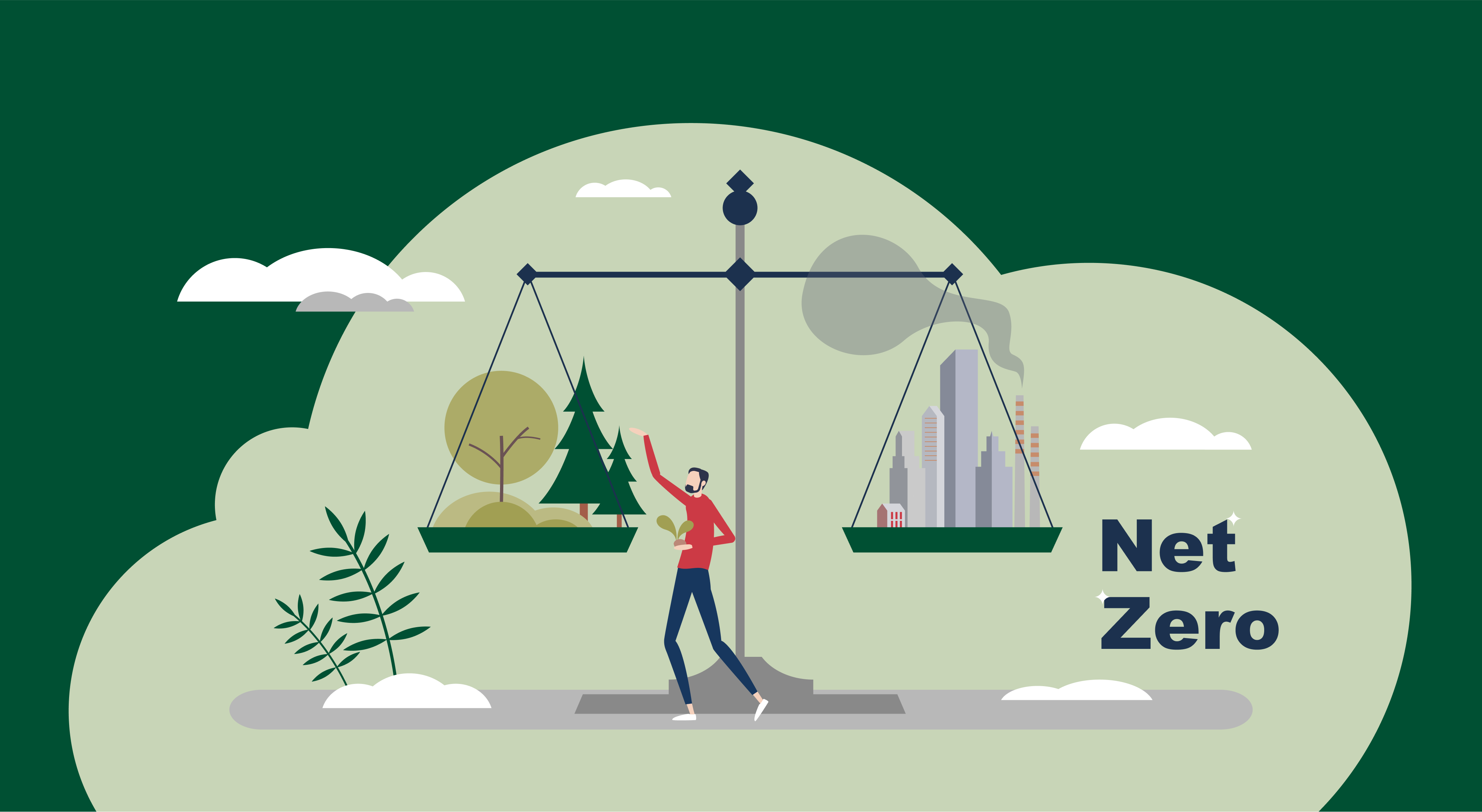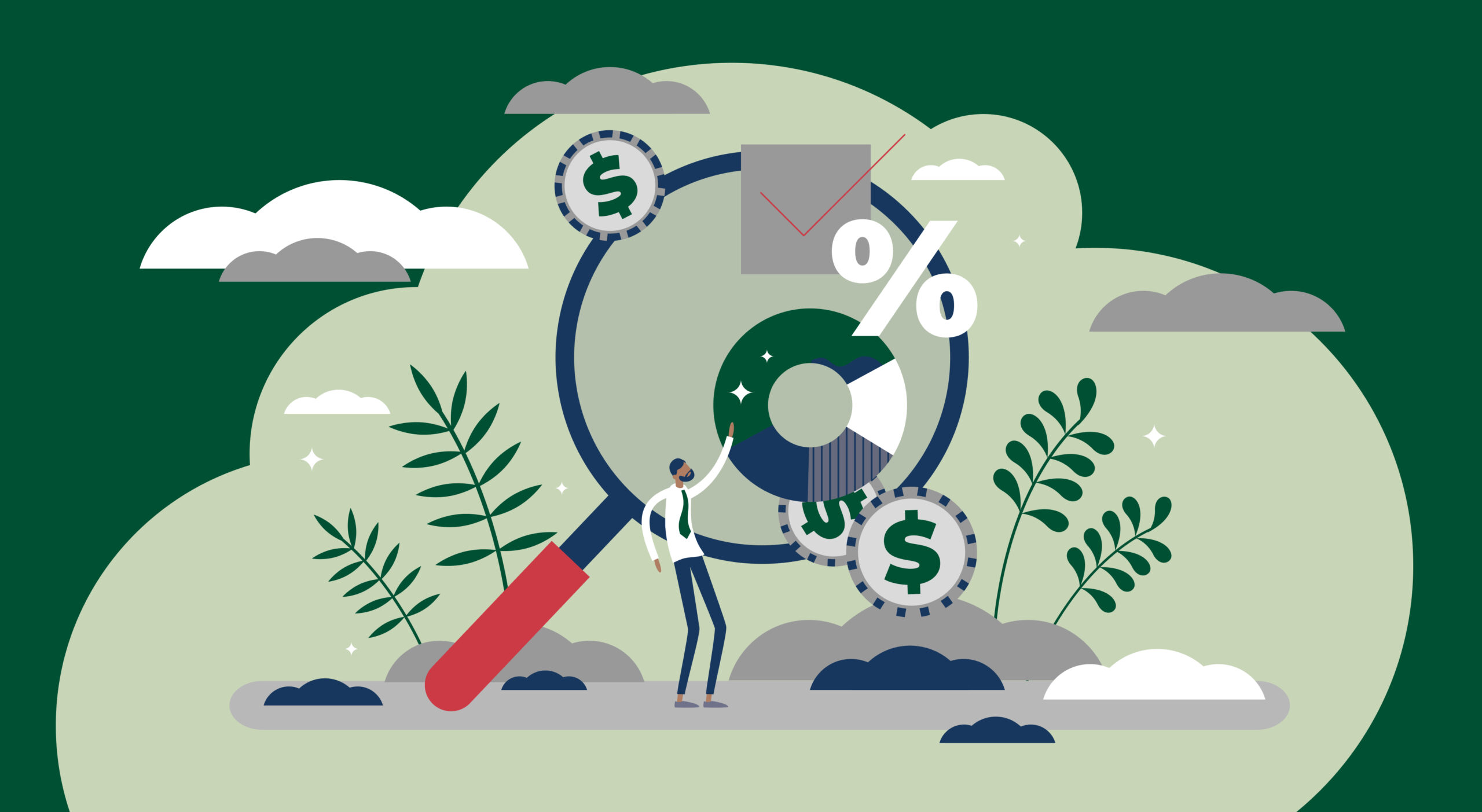There are increasing guidelines that require companies to measure sustainability and report accurately. Which companies do new regulations apply to? Which indicators and methods can companies use to meet these standards? An overview.
WifOR supports companies to evaluate and measure sustainability performance – including SAP. In an interview, WifOR spoke with Thomas Birnmeyer, Chief Expert and Senior Director for Global Sustainability at SAP, about the joint project. Find the interview here.
The aim of the CSRD is to make the information needed to assess corporate sustainability risks available to the public. Sustainability indicators are becoming increasingly important, especially for investors. Through this regulation, the pressure on companies to take greater account of sustainability in their business decisions should increase.
Which companies are required to measure and report sustainability?
In the EU, regulations increasingly require that companies measure sustainability and report on it. Which companies are affected depends on their legal status and size – measured in terms of sales, number of employees, and total assets.
Non-Financial Reporting Directive (NFRD)
The NFRD applies to listed companies, banks, insurance companies and other corporations in the EU that are classified by public authorities as being of public interest, as well as companies with more than 500 employees. The NFRD requires companies to disclose non-financial information that is material to their business and value chain.
This information includes:
- Environmental aspects
- Societal aspects
- Treatment of employees
- Human rights considerations
- Instances of corruption and bribery
- Diversity in leadership positions within companies (relating to age, gender, educational and professional backgrounds)
Corporate Sustainability Reporting Directive (CSRD)
The CSRD extends the NFRD to require that all listed companies operating in the EU market – with the exception of listed small companies – fall under the new reporting obligations. In addition, companies not driven by capital or market orientation are subject to the CSRD if they meet two of the following three criteria:
- Balance sheet greater than €20m
- Net sales over €40m
- More than 250 employees
Companies categorized under the CSRD will have to apply the new regulations as of the financial year 2024 – for reporting to be published in 2025. Companies subject to the CSRD will have to report in accordance with the European Sustainability Reporting Standards (ESRS). The draft standards are being developed by EFRAG, formerly known as the European Financial Reporting Advisory Group.
USA
In the USA, there is no specific federal regulation requiring companies to measure sustainability and report on it. However, the disclosure of sustainability information in the USA is influenced by industry-specific regulations and standards.
Securities and Exchange Commission (SEC)
The SEC requires listed companies in the US to disclose information relevant to investors, including ESG-related risks. The exact disclosure requirements depend on various factors and are less specific in comparison to those in the EU.
Regulations on State-level
Some states have passed specific laws requiring companies to report on their sustainability performance. Therefore, specific requirements and criteria vary depending on the legal framework, State, and industry.
Companies should review the applicable regulations in their respective regions and industries to ensure compliance with sustainability measurement and reporting obligations. For example, the California Transparency in Supply Chains Act requires companies in California to report on their efforts to combat human trafficking and forced labor.
Voluntary initiatives and standards
There are also various voluntary initiatives and standards in the USA that support companies to report and measure sustainability performance. These include the Global Reporting Initiative (GRI) and the Sustainability Accounting Standards Board (SASB).
Developing a sustainability strategy
A sustainability strategy is the essential framework that companies develop to define and achieve their sustainability goals. It serves as a guideline for integrating sustainability principles into all areas of the company in order to achieve positive outcomes in the long term.
Effective sustainability strategies take a company’s entire value chain into account and encompass all three areas of sustainability – society, the environment, and the economy. They also link corporate values with the corporate strategy. In addition, a sustainability strategy can only be successful if it is adopted at management level so that it is integrated directly into decision-making processes.
Which KPIs can companies use to measure sustainability?
Measurable indicators for monitoring progress and results are a basic prerequisite for a successful sustainability strategy. The relevant key performance indicators (KPIs) which measure sustainability can be divided into social, environmental, and economic indicators.
Social KPIs to measure sustainability
KPIs relating to social factors measure the impact of the company’s activities on society. They include aspects such as:
- Safety in the workplace
- Fair wages
- Gender pay gap
- Workforce diversity
- Employee education and training
- Risk of corruption
- Risk of child labor
- Risk of modern slavery
Environmental KPIs to measure sustainability
Environmental KPIs measure a company’s impact on the environment. This impact can be measured by various indicators including:
- Greenhouse gas emissions
- Other air emissions
- Energy consumption
- Water consumption
- Water pollution (certain chemicals, e.g. nitrogen or phosphorus, that enter water during production through waste or fertilizer)
- Land use
- Waste
- Plastic emissions (the plastic that enters the ocean through improper disposal, microplastics in products, or abrasion)
- Effect on biodiversity
Economic KPIs to measure sustainability
The economic KPIs include:
- Jobs created
- Gross value added (GVA), which indicates a company’s contribution to gross domestic product (GDP) generated by profits, taxes and wages.
Which frameworks exist for reporting?
There are various sustainability reporting frameworks that organizations can use to present their performance. These differ in focus, scope, and reporting requirements. Companies can choose one or a combination of these frameworks depending on their specific needs and the expectations of their stakeholders.
Global Reporting Initiative (GRI)
The GRI is an internationally recognized standard for sustainability reporting that helps companies disclose comprehensive information about their social, environmental and economic performance. GRI is recognized worldwide, promotes comparability between companies, and enables transparent communication of sustainability performance.
However, reporting according to GRI requires extensive information and knowledge on how to apply the information – which can be complex. In addition, data collection can be very extensive, especially if the company has multiple sites or business units.
Sustainability Accounting Standards Board (SASB)
SASB develops industry-specific standards that focus on financially relevant sustainability issues. These standards help companies to identify and report on the essential sustainability aspects of their industry. SASB enables a more precise focus on financially relevant sustainability issues and improves comparability between companies within an industry.
At the same time, SASB’s industry coverage is limited, so it may not cover all relevant sustainability aspects. The standards are also less comprehensive than those of the GRI.
Task Force on Climate-Related Financial Disclosures (TCFD)
The TCFD is aimed at companies, investors, lenders, and insurers. Compared to other frameworks such as the Global Reporting Initiative (GRI) and the Sustainability Accounting Standards Board (SASB), the TCFD places a special focus on climate-related risks and opportunities in financial reporting.
While the GRI provides a comprehensive framework for sustainability reporting and the SASB focuses on financially relevant sustainability issues, the TCFD focuses on the disclosure of climate-related information and its financial implications. The TCFD recommendations are intended to help companies identify and respond to their climate risks and provide relevant information to investors and other stakeholders so they can make informed decisions.
What tools can be used to measure sustainability
Selecting the right tool or method for measuring sustainability depends on the data available and varying according to the sustainability dimension. It can be useful to use a combination of different tools to get a holistic view of sustainability performance in order to achieve meaningful results.
Life Cycle Analysis (LCAs)
To measure the environmental impact of a product or service throughout its life cycle, LCAs are a comprehensive method. Aspects such as raw material extraction, production, use, and disposal are factored in. However, conducting LCAs is data-intensive and requires specialized expertise. It can be difficult to collect comprehensive and accurate data for all phases of the life cycle.
Cost-Benefit Analysis (CBA)
CBA is a decision support process that considers the costs and benefits of a particular activity. The advantage of CBA is that it allows for a comprehensive analysis that incorporates the relevant costs and benefits into the strategy management process – enabling informed decisions to be made.
However, CBA requires a large amount of data, including information on costs, benefits, and their valuation. A disadvantage of CBA is that it can be time-consuming and resource-intensive due to its complexity and the amount of data required. In addition, different values and preferences of decision makers may lead to different outcomes. Nevertheless, CBA remains an important tool for evaluating projects and policies.
Impact Measurement & Valuation
Impact Measurement and Valuation is an approach that aims to measure and evaluate both direct impacts and effects along the entire supply chain. This approach is applicable to all three sustainability dimensions.
The method is particularly suited to large companies with global supply chains, as it uses model calculations to measure and evaluate the positive and negative impacts of a company based on purchasing data. By converting physical units into a single currency, Impact Valuation creates comparability between impacts. It supports, therefore, decision-making, communication of results, and integration of sustainability into corporate strategy. At the same time, impact valuation can be complex and requires accurate data analysis.
Best Practice SAP
The Value Balancing Alliance (VBA) is an association of various companies that use the Impact Valuation method to translate their social impacts into monetary units, using the resulting values for controlling and reporting. Beyond meeting legal requirements, Impact Valuation provides valuable results for more sustainable corporate management. WifOR supports the VBA as a scientific partner in the methodological conception of global sustainability standards. WifOR also advises several members of the initiative on the implementation of the Impact Valuation method – including SAP. In this interview, Thomas Birnmeyer, Chief Expert and Senior Director for Global Sustainability at SAP, talks about the joint project. The interview took place in September 2021.
What were the key needs and challenges you approached WifOR with?
Thomas Birnmeyer: As a member of the Value Balancing Alliance (VBA), we were faced with the question of how to implement the method recommended for evaluating ESG indicators at SAP. We do not have sufficient primary data to calculate upstream effects, meaning the impacts that occur from our suppliers. Therefore, we knew that we would have to rely on industry data and input-output analyses. To fill these data gaps, we come to WifOR as the scientific partner of the VBA. WifOR has since supported us in modeling the impact measurement and evaluation of our supply chain.
What were the milestones of the project?
The first milestone of our project was the scope definition. We determined which of the VBA indicators are meaningful for SAP and how we can expand them – for example, gross value added or training measures. We then collected the internal data that WifOR needs for further processing. The third step was the actual calculation and data modeling. Here, WifOR evaluated the VBA indicators according to the VBA method papers for the supply chain. The final step was the interpretation and presentation of the results.
How has SAP been able to use the results?
Our project is currently still in pilot status. Our aim is not only to meet existing and future regulatory requirements, such as CSRD or due diligence, but also to actively integrate the Impact Valuation results into management processes and decision-making. This is our mid- to long-term goal. However, some of the results have already been applied today. For example, with WifOR’s support, we reorganized the processes for SAP’s internal data collection for impact assessment and improved our calculation methods. As a result, we achieved a higher overall quality of results and reporting, which helped us to demonstrate the added value and importance of Impact Valuation – both internally and externally.
Initial results can be found in our Integrated Report 2020 (see pages 210-216). For example, we determined the greenhouse gas impact coming from SAP’s supply chain. The negative impact of greenhouse gas emissions was quantified at €182 million, which helped us in our decision-making regarding the implementation of our CO2 reduction strategy.

Thomas Birnmeyer
Chief Expert & Senior Director for Global Sustainability at SAP
Our ambition is not only to meet legal requirements, but also to actively integrate the impact valuation results into management processes and decision-making. That is our mid to long-term goal.
What have been the most important learnings since the project began?
Overall, there have been plenty of helpful learnings. One topic where we made a lot of progress is, for instance, the definitions of different VBA indicators. This helped us better understand the methodology behind the assessment of environmental and social impacts. As a result, we understand which parameters are ultimately crucial for measuring impact.
What feedback, both internally and externally, have you received in the course of project and after completing it?
We received a lot of positive feedback around meaningfully supplementing our financial reporting with the non-financial aspects – this was only possible by translating non-financial data into the same “language” as financial data. The impact measurement approach that we implemented with WifOR contributed greatly to this. Internal feedback has also been insightful: our CFO decided to incorporate Impact Valuation step-by-step into management processes and decision-making. The fact that we were able to derive specific measures from the Impact Valuation results to foster change made this project so significant.
Which further steps are you planning for the future?
Over the next few years, we will keep on measuring and evaluating the VBA indicators using the methodology developed with WifOR. Reporting is a requirement, but incorporating these results into decision-making processes is the truly decisive element. Impact Valuation at SAP will be developed to such an extent that the method is gradually used throughout the company and integrated across departments.







